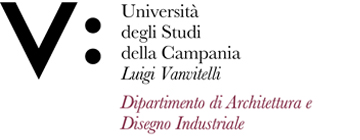Chiara INGROSSO
Insegnamento di STORIA DEL DESIGN E DELL'ARCHITETTURA 2
Corso di laurea in DESIGN E COMUNICAZIONE
SSD: ICAR/18
CFU: 6,00
ORE PER UNITÀ DIDATTICA: 48,00
Periodo di Erogazione: Primo Quadrimestre
Italiano
| Lingua di insegnamento | ITALIANO |
| Contenuti | Il corso si concentra sulla storia dell'architettura e del design contemporaneo dalla metà del XIX secolo ad oggi. |
| Testi di riferimento | I testi di riferimento sono: |
| Obiettivi formativi | Il corso fornirà una conoscenza specialistica dell'architettura e del design contemporaneo italiano e internazionale, oltre a fornire un quadro approfondito di alcune nozioni teoriche che caratterizzano i dibattiti contemporanei architettonici e urbani. |
| Prerequisiti | Gli studenti devono avere una conoscenza di base della storia dell'architettura moderna e contemporanea. |
| Metodologie didattiche | I metodi di insegnamento sono lezioni ed esercitazioni. |
| Metodi di valutazione | I metodi di verifica coincidono con le esercizitazioni e l'esame finale. |
| Altre informazioni | Altre informazioni verranno fornite durante le lezioni. |
| Programma del corso | 1. La Rivoluzione Industriale: introduzione alla Storia dell’architettura contemporanea e al Disegno industriale |
English
| Teaching language | Italian |
| Contents | The course focuses on the history of contemporary architecture and design from the mid-nineteenth century to the present. |
| Textbook and course materials | The reference texts are: |
| Course objectives | The course will provide a specialist knowledge of contemporary Italian and international architecture and design, as well as providing an in-depth picture of some theoretical notions that characterize both architectural and urban contemporary debates. |
| Prerequisites | The students must have knowledge of the history of modern and contemporary Architecture. |
| Teaching methods | The teaching methods are lectures and exercises. |
| Evaluation methods | The verication methods are in-course exercises and final examination. |
| Other information | Further information will be provided during the lessons. |
| Course Syllabus | 1. The Industrial Revolution: Introduction to the History of Contemporary Architecture and Industrial Design |








